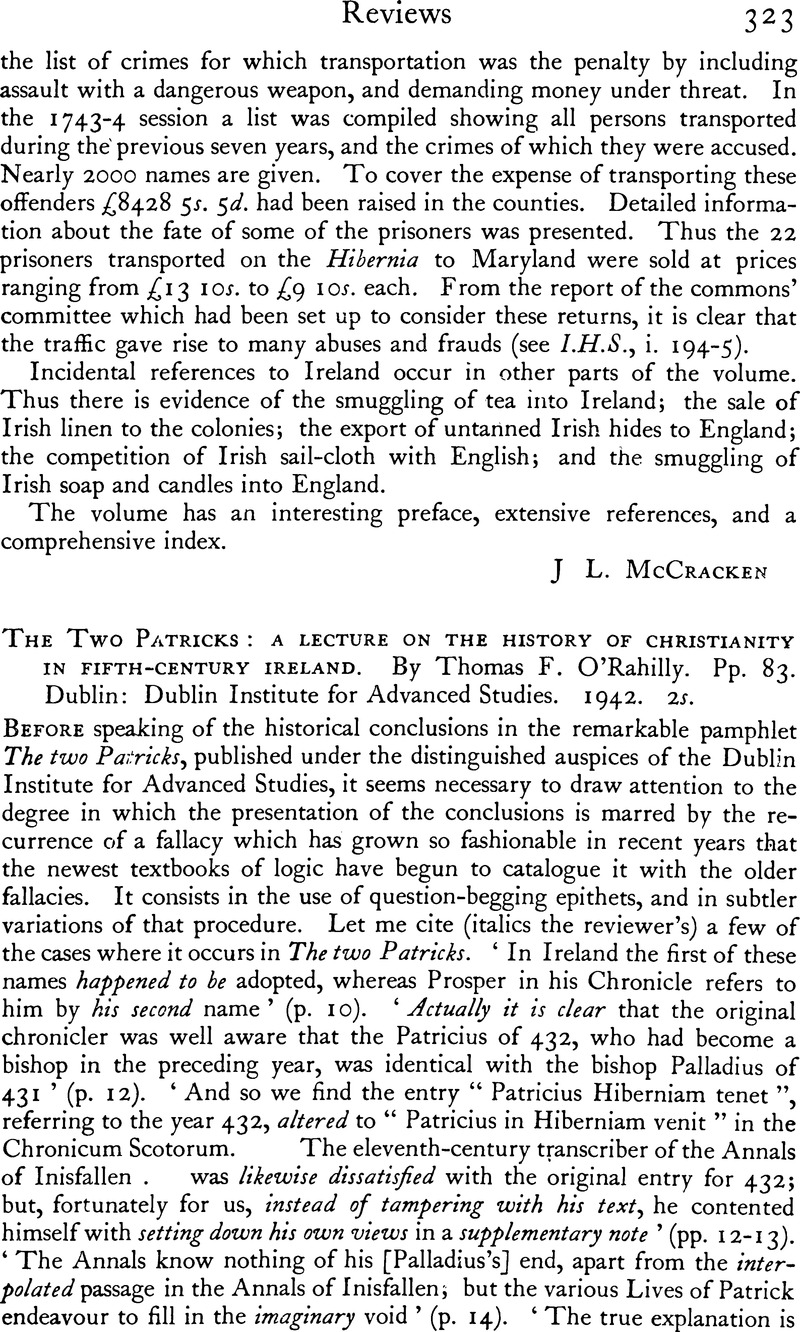No CrossRef data available.
Article contents
The Two Patricks: A Lecture on The History of Christianity in Fifth-Century Ireland. By Thomas F. O'Rahilly. Pp. 83. Dublin: Dublin Institute for Advanced Studies. 1942. 2s.
Published online by Cambridge University Press: 28 July 2016
Abstract

- Type
- Reviews
- Information
- Copyright
- Copyright © Irish Historical Studies Publications Ltd 1943
References
1 With this, cf. Conf. 58 : Oro Deum ut dignetur ut reddam illi [me] testem fidelem usque ad transitum meum.
2 With this, cf. Ymmuin ocus abcolips, na trí cóicait noscanad (Fiacc's Hymn : ‘ Génair Patraicc in Nemthur ’), in Thesaurus Palaeohibernicus, ii. 307 ff.
3 A full analysis of the historical allusions in the Audite omnes will be found in Professor MacNeill's article ‘The Hymn of Secundinus’ in I.H.St., ii (1940). 129 ff.
4 But cf. The two Patricks, p. 30: ‘The last thing the saint could have imagined would be that, many hundreds of years later, this document (the Confessio] would be scrutinized again and again with a view to gleaning biographical details of the writer's life ’
1 A similar difficulty exists, of course, for a chronology which dates Patrick's birth between 385 and 390, and his Irish mission in 432 : his age then would be between forty-two and forty-seven. Professor MacNeill faces the difficulty and offers an interpretation of donec prope deficiebam (in I.H.St., ii (1940). 147), which, however, I am loth to accept. Professor O'Rahilly does not refer to the point.
2 In Irish monasticism: origins and early development (1931), pp. 70-4.


